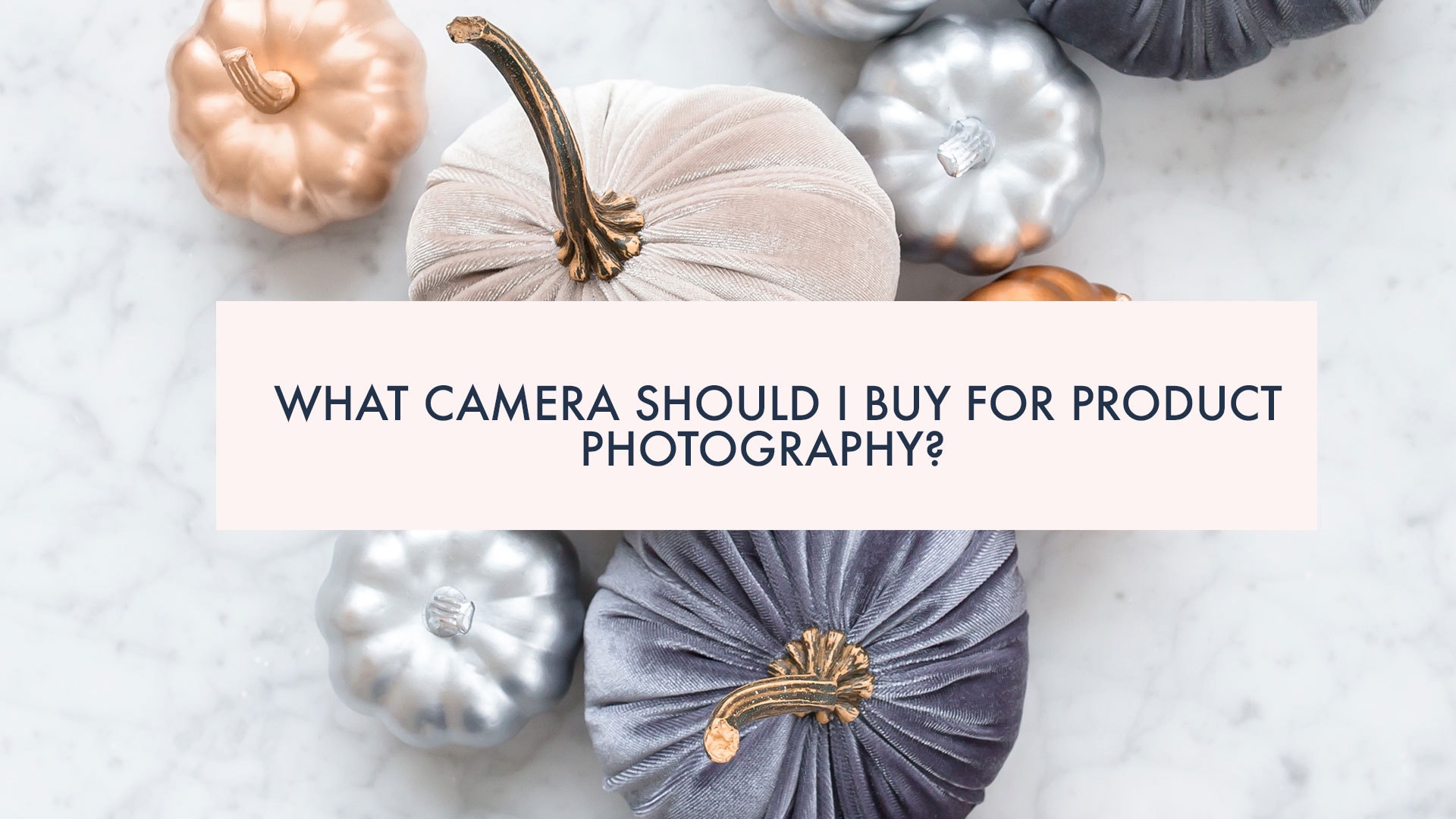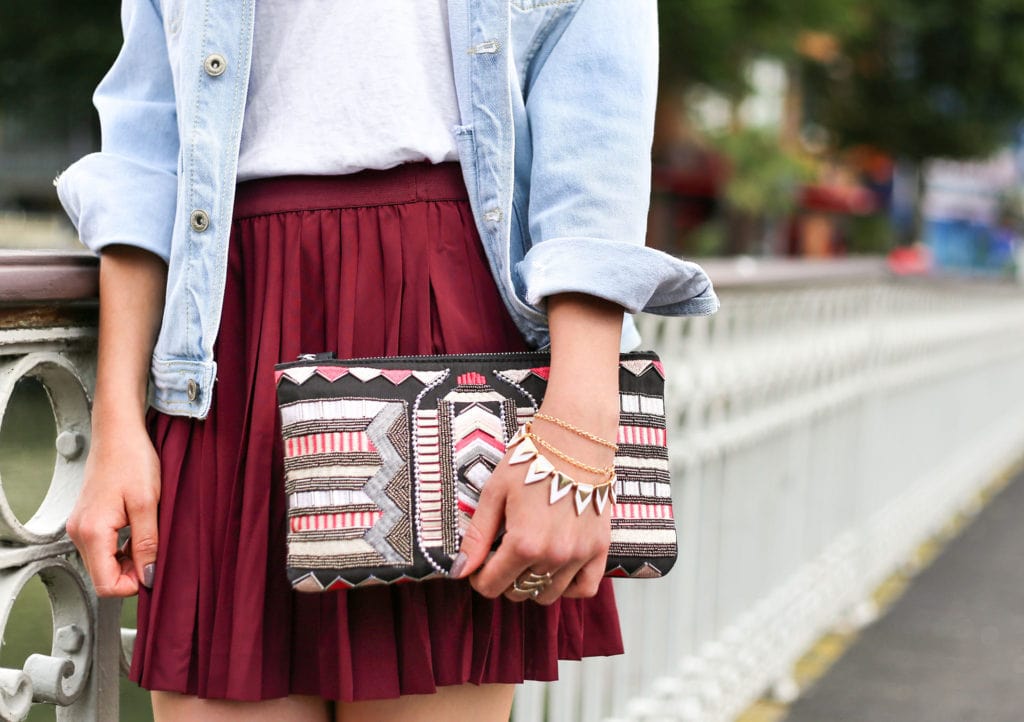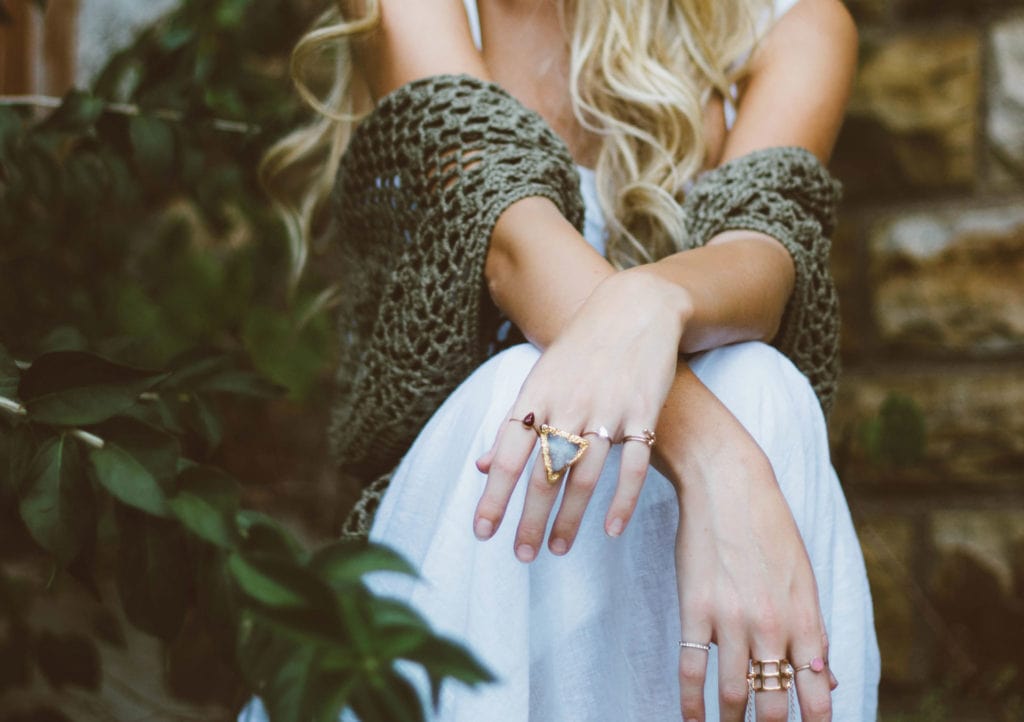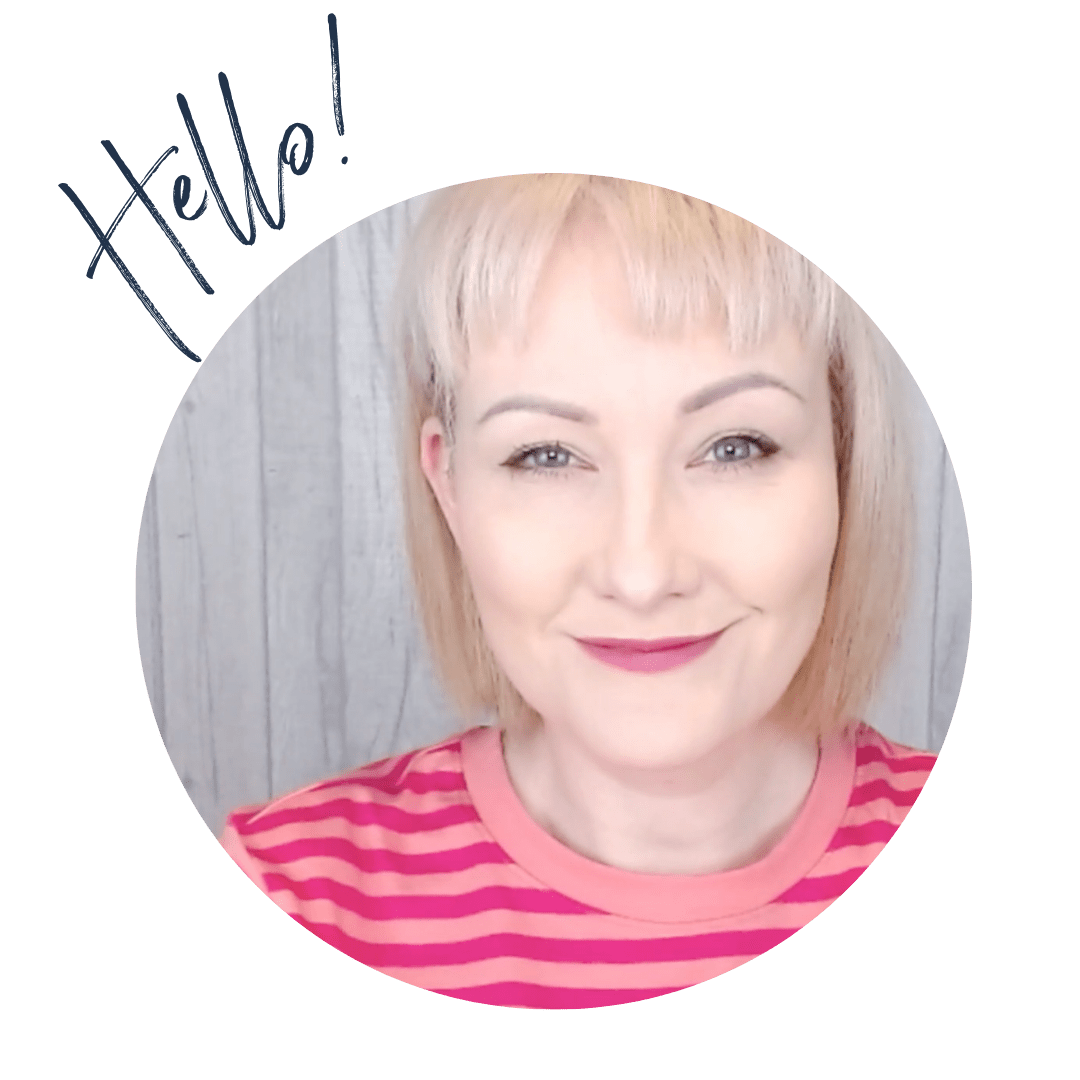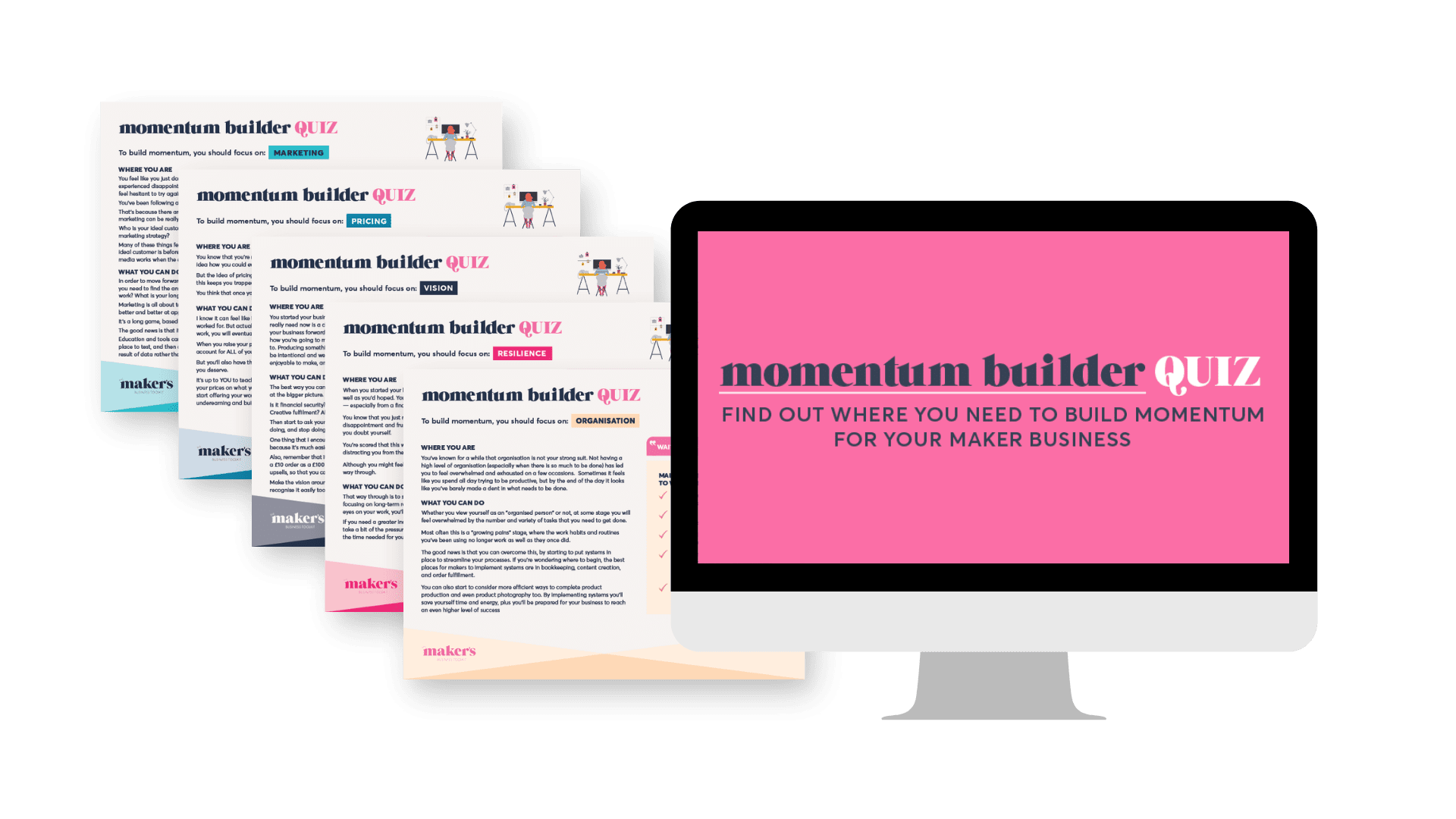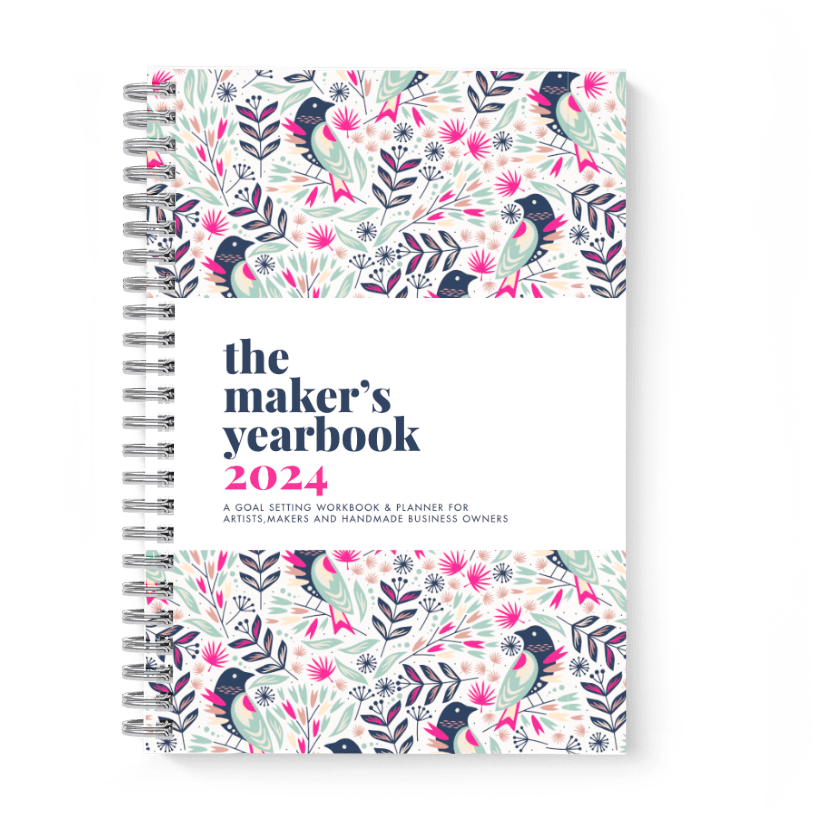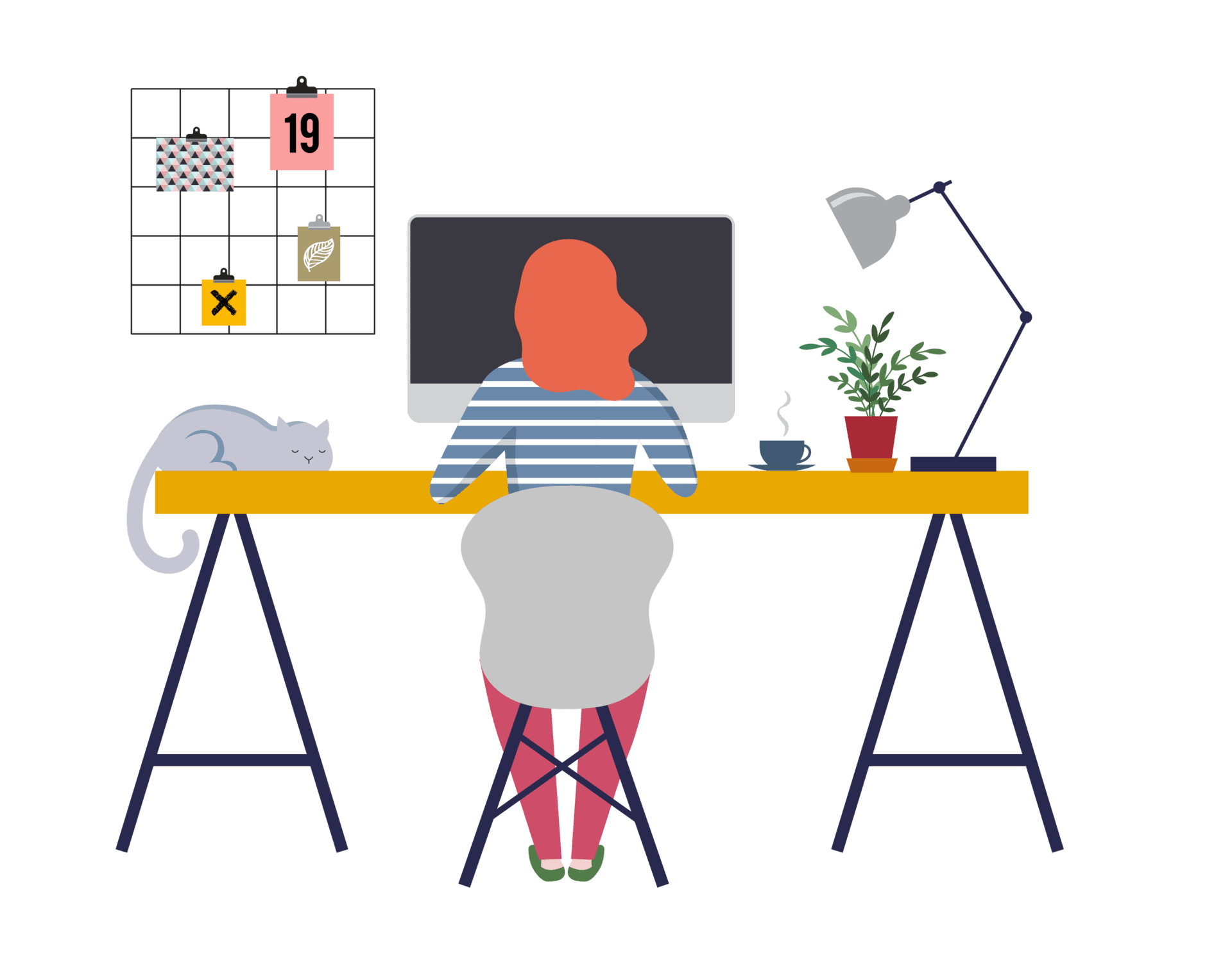We all know that product photographs are really important for selling online. They are the only way your online customers can know how lovely your handmade thing is. The only way that they can see what they’re going to get.
And they’re not only important online.
Good photos get us accepted to the best art and craft fairs, they get us published in newspapers and magazines, they create great stand displays and, perhaps most importantly, they create brand recognition.
So we all know they’re important. And many of us know that our product photographs aren’t as good as they could be. We know we need to work on them, but often we don’t know what to do.
A better camera seems like the quickest, easiest way to make a big improvement to our images and, as a photographer myself, I get a lot of questions from makers about finding a decent camera that will help them to get the shots they need to sell their products.
But the quickest, easiest, cheapest, and most effective way to make a big improvement to your images, so that you can sell more products, isn’t a camera at all.
If you know that you need to improve your product photography and you have money to invest in a new camera then there is a better investment you can make.
You can invest in photography education, in particular around styling and lighting, for a fraction of what it would cost you to buy a new camera, and get fantastic images with the camera you already have.
Even if it’s just your smartphone camera. Even if it’s just your crappy point and shoot.
If you’re already tuning out because you’ve got way too much to do to spend time on a class right now, and you know that a new camera is the way to go, stick with me for a moment while I explain how getting a new camera can often be MORE time consuming and also lead to worse results.
It’s a misconception that buying a new camera will automatically improve your photographs.
Unless you know exactly how to use that new camera to its full potential, it’s not the quickest way to make improvements and it can actually end up being a big fat waste of money.
With the exception of the most experienced photographers, there is a learning curve for all of us in getting to grips with a new camera.
If you’ve never used a DSLR before and don’t know how to, you will probably get poorer images than you did with your smartphone or your point and shoot camera.
There is a technical learning curve to using a DSLR camera and most people have to take a class to get to grips with it. It can take some time before you’re taking images you’re happy with, and you actually don’t need many of a DSLR’s features to create great lifestyle product shots.
The last thing I want for you is to spend a large amount of money on a new camera and find that you have to take a class anyway to find out how to use it, or worse still, you end up not using it at all.
The truth is that a photographer who knows what he or she is doing can take great product shots with almost any camera.
And….
A photographer who doesn’t know what he or she is doing cannot take good product shots with even the best camera.
So learning more about WHAT TO DO will always be a better investment AND it will help you to make informed decisions about which camera you really need, rather than listening to the salesperson fomoing you about features you don’t need.
The difference between good images and bad images is in the knowledge and experience of the photographer.
That’s why we pay professionals. We don’t pay them because they have the most expensive cameras, we pay them because they know just what to do to make your product look amazing.
Knowing how to style a photograph is something that no camera can do for you and it’s an absolutely vital skill for doing your own product photography.
Many makers don’t bother with lifestyle photographs, preferring instead to focus on showing the piece in as much detail as possible but I think this is a crucial mistake that misunderstands the difference between showing a product and selling a product.
Detail shows the product.
Lifestyle sells the product.
Of course it’s natural for artists and makers to want to show the detail in a product. After all, we’ve worked really hard on this piece and we want people to know and understand the craftsmanship that has gone into it. But, for most people, that is not why they buy.
Process and detail is really important to us, but it’s not always important to our buyers.
People buy on emotion.
They buy something because of how it makes them feel or how they believe it will make them feel.
And then they justify it with logic.
Photographs that concentrate on details are appealing to logic.
Photographs that focus on lifestyle are appealing to emotion.
And that’s not to say that it’s not important to show detail or to appeal to a buyer’s appreciation of craftsmanship. I’m simply saying that it’s less effective as a selling strategy than appealing to emotion.
Lead with emotion and follow up with detail and you will be more successful in selling your products.
Styling your photography and learning to tell a story with your images is something that makes a huge difference to your ability to sell products online. It makes so much more difference than a better camera.
As a single person business I know that you have very limited time and money. And I want to help you to get the best out of both.
A short course that teaches the basics of using natural light and also how to style your products to create a great lifestyle image is an investment that will pay for itself over and over again. And it is usually SIGNIFICANTLY cheaper than buying a new camera.
It may also turn out to be less of an investment in time as you SAVE time learning a new camera and you SAVE time faffing around with your product shoots, wondering why nothing is working and why it looks so much more rubbish than your competitors’ Instagram photos.
So where can you find great photography education?
Amy Eaton of amytakespictures.com has some fantastic courses and free resources that are specifically designed to help artists and makers take better photos of their products.
And good general courses about photography and product photography can be found at Creative Live.
And if you’ve read this far and you’re STILL determined to buy a new DSLR camera, let me give you my tips.
1️⃣ Don’t buy features you don’t need.
For most people an entry level DSLR is perfectly fine for most product photography.
Many of the extra features you get with more expensive models are not necessary for product photos. If it’s not going to be on a billboard you don’t need a large sensor and if you’re shooting inside with a tripod, you don’t need image stabilisation or fast autofocus.
You also don’t need good performance at a high ISO because you’ll be shooting stationery objects and can use a tripod to get good results at a low ISO.
2️⃣ Don’t buy the kit lens.
The kit lens is usually not the best option. Buy a 50mm or 35mm f2.8 lens instead and you’ll be able to get great product shots.
3️⃣ Consider getting a macro lens
If you need close ups of small objects – such as details on jewellery, test how close to the object your lens can focus.
If it’s not close enough, consider if you can photograph from further away and crop in. If not, you may want to invest in a macro lens.
4️⃣ Try before you buy
Try renting or borrowing the specific camera and lens combination BEFORE you invest a large amount of money so that you can see if it does make any difference to your images.
Also consider buying second hand.
5️⃣ Invest in a tripod
A tripod is also a good investment and an adjustable centre column can be a good feature for product photography.
Remember, it will be in your studio so you don’t need it to be particularly lightweight or portable.

